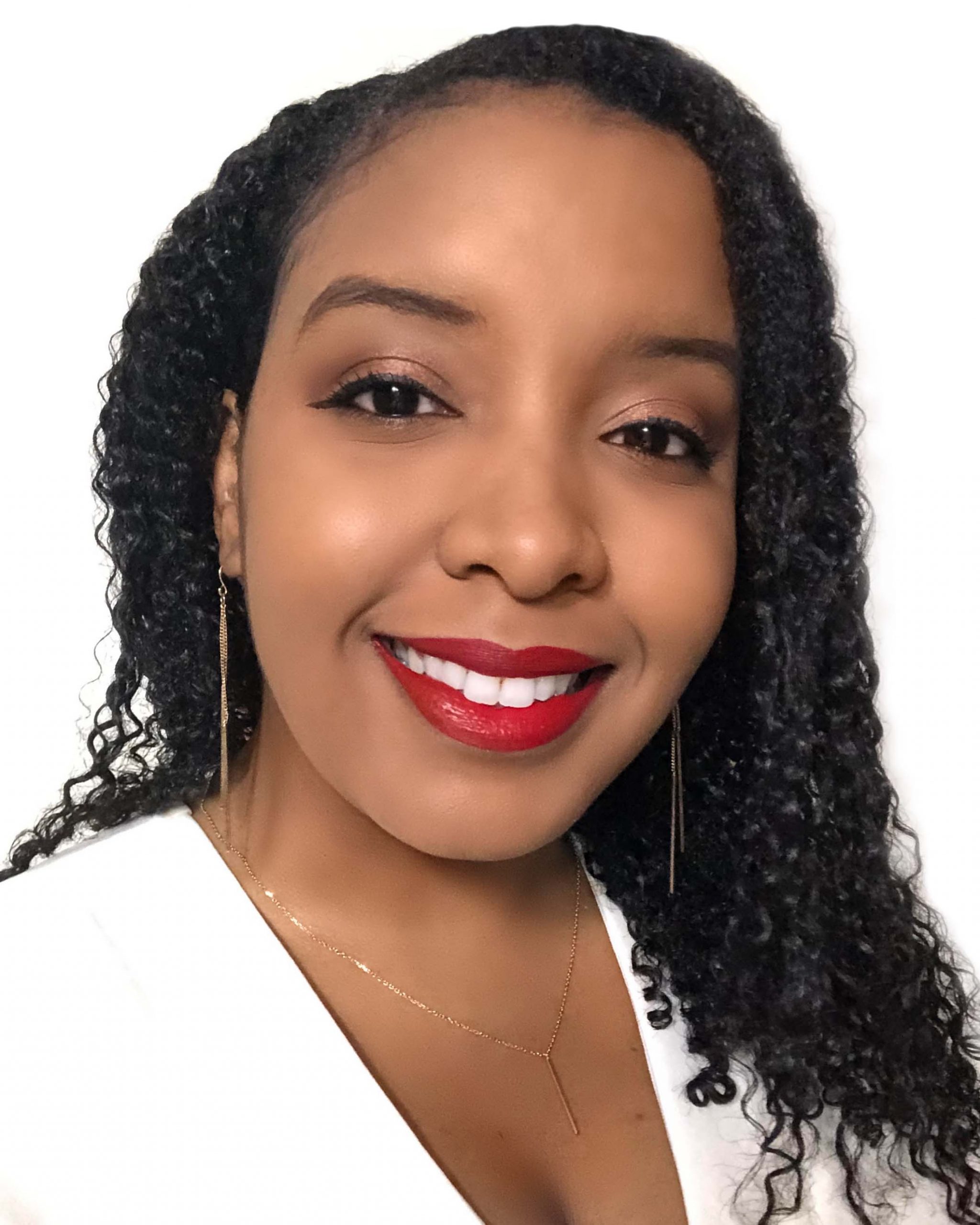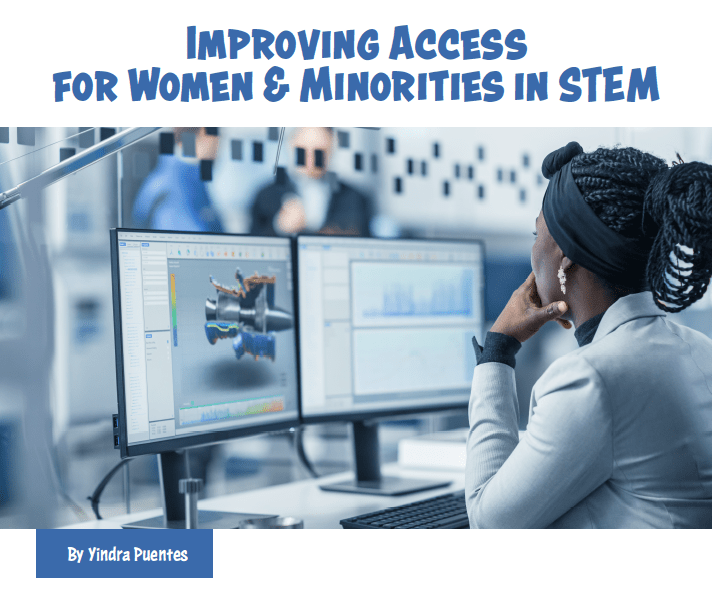By Yindra Puentes, originally published in Equity & Access
The lack of minority women in STEM poses a number of problems in our society, not just for the women who want to break into those fields, but for the general public that stands to benefit from the advances created by women in those positions. For example, the lack of women in STEM may mean fewer medical treatments for women as a whole, since female scientists are more likely to develop treatments for women. Finding a niche in STEM can be incredibly difficult for many women, especially those who are minorities. As I have learned during my career, the good news is that students, educators, and other professionals can take steps to help change these statistics and expand career opportunities for all.
How I Found My Niche in STEM
In high school, I always knew that my forte was science. At first, I thought I would be a physician like my lifelong mentor: my mom. I was extremely lucky to have an adult role model in my life who pushed me to focus on math and science and who encouraged excellence as I found my way to my career. Hers was the kind of mentorship that, if I got a 100% on a test, she asked why I didn’t get the 5 extra credit points available. So a drive for achieving the best I could in life was instilled in me since I was a child. In college, I discovered statistical genetics and computational methods—and it took off from there. It also helped that I minored in philosophy, which provided me with an additional layer of critical thinking and analytical skills that are highly useful for STEM fields today.
However, that doesn’t mean the journey was easy. As an adolescent, I moved all over the United States and attended up to four different high schools. I was on my own and lived with various family members who were willing to host me. There were a lot of barriers that stood in my way, but my mom had instilled all the resilience and grit I needed to overcome them, and my mentors guided me toward a clear path in science. Women in STEM tend to face a higher degree of discrimination and greater barriers to entry, as do minorities in STEM. However, support from educators and other professionals can help smooth the way.
How Educators and Schools Can Help Minorities Explore STEM
For women and minorities to enter STEM fields, it’s critical that they first have access to those vital educational opportunities that will shape them. I was fortunate enough to have a great deal of support during grad school, including strong mentorships, and a number of fellowships. Yet, I can remember walking into a room of 200 students in which I was one of only two students of color—and the only woman of color in the room. However, not all minorities are lucky enough to receive the support that I did. Here are some specific, practical steps that schools can take to help students like me.
Raise awareness about grants, scholarships, and community support programs
Make sure that minority students are aware of the options they have available to support them as they try to find a place in STEM. For example, UWorld Cares, the philanthropic arm of the company I work for, recently approved funding from a program called Girls, Inc to provide funds to get more girls interested in STEM careers. If students aren’t aware that those options are available, however, they can’t take advantage of them. There are a wide range of grants and scholarships out there that can help students launch into a STEM field. Even better, with many of these programs, they will end up with little to no debt once they’ve finished their education and are ready to start their career.
Offer exam prep opportunities as early as possible
Exam prep early in students’ years of schooling supports equity in education by ensuring that all students have access to the same materials and options. UWorld’s learning platforms are geared to help high school students from all socioeconomic backgrounds receive college credit by scoring well on AP exams and help college students get accepted into medical school and pass the many exams and certifications they may need in order to enter and succeed in STEM fields.
Connect students with mentors through their entire educational path
Mentorship is one of the most valuable tools that educators can provide to minority students who are interested in entering STEM fields. The significant underrepresentation of minorities in STEM careers is linked to the fact that many students from these backgrounds do not have family members, friends, or professional acquaintances who have entered those fields. As a result, these students can often feel isolated and may have trouble finding the support they need, both within the educational institution and outside it. So I believe it’s vital to focus on providing mentorship through every step.
For example, as I advanced as a student, my pre-health advisors and graduate thesis advisors were one of the best support systems I had. They connected me with the right people, provided the resources I needed, and helped me navigate the complex landscape of academia.
When students find a mentor who does what they want to do in the future, they can ask a simple question: “How did you get where you are, and what do I need to do to accomplish the same goal?” More importantly, I always recommend that women and minorities in STEM seek mentorship from individuals like them. Mentors and their students should talk about how to solve problems, overcome challenges, achieve success, maintain focus and drive, and gain access to important career opportunities in the sciences. This will help students learn by example and create the space needed to have open and vulnerable discussions about this challenging but rewarding career path with a role model.
Encourage students to take ownership of their career path
Exploring different STEM-related careers begins with students first doing their research and asking the experts all the questions relevant to career building. I started out assuming that I would be a physician. I’ve always been good at science, and that seemed like a good fit for me. However, when I started reading about bioinformatics and genomics in research journals, I became intrigued and purposely took a biostatistics class in college. From there, I spoke to the professor who taught the class and was able to join his plant genomics lab. There, I finally discovered the interface between math, science, and computational methods. These seemingly small but highly significant experiences put me on a path to an edtech career because I would soon discover there was an even better fit for my future as a professional. This is why I encourage a well-informed, self-driven approach to making a career choice.
Entering a STEM field as a woman, a minority, or both can be difficult, but it’s also incredibly worthwhile and rewarding. Improving equity is critical, not just for minorities, but also for the institutions that support them. With these steps, STEM education and jobs can become more accessible to a wider range of people. I hope to see the world develop into a place where everyone can have a role model and a source of support to look up to, and feel they can achieve a successful career in STEM—because that is how we can advance science.

Yindra Puentes is a bioinformatics scientist for UWorld education. She is the MCAT & AP sciences product manager at UWorld and a member of the UWorld Cares employee board. She leads a multidisciplinary team of scientists, university professors, and high school teachers in the development of college-level science courses aligned to the MCAT exam and high-school level science courses aligned to the AP exam. She is passionate about empowering minorities to enter college. She can be reached at YPuentes@UWorld.com.
The American Consortium for Equity in Education, publisher of the "Equity & Access" journal, celebrates and connects the educators, associations, community partners and industry leaders who are working to solve problems and create a more equitable environment for historically underserved pre K-12 students throughout the United States.
- American Consortium for Equity in Educationhttps://ace-ed.org/author/admin/
- American Consortium for Equity in Educationhttps://ace-ed.org/author/admin/April 23, 2025
- American Consortium for Equity in Educationhttps://ace-ed.org/author/admin/
- American Consortium for Equity in Educationhttps://ace-ed.org/author/admin/







